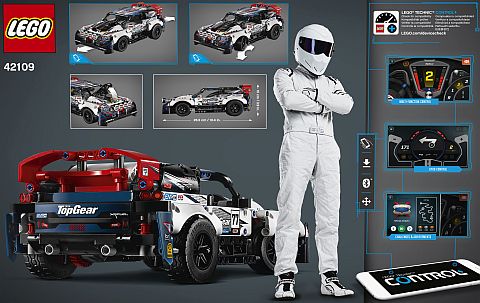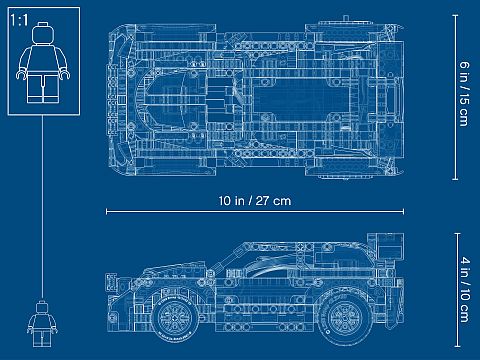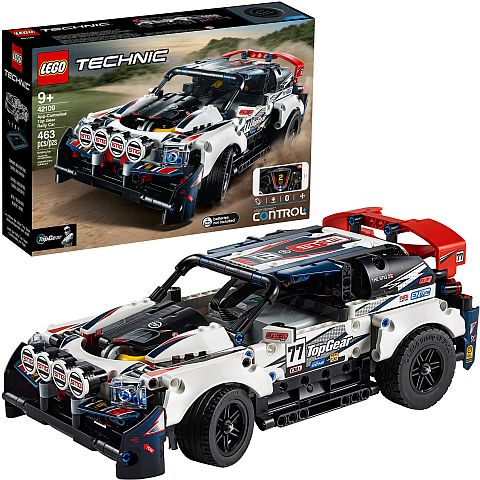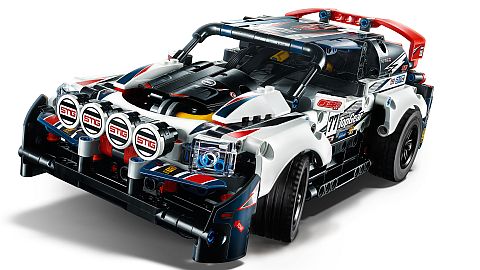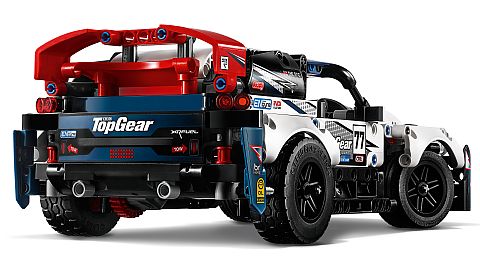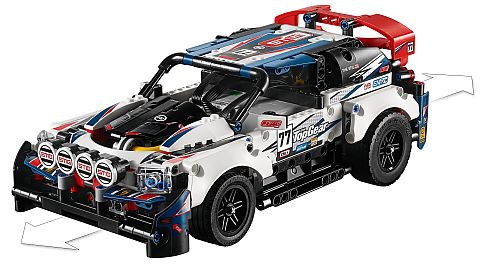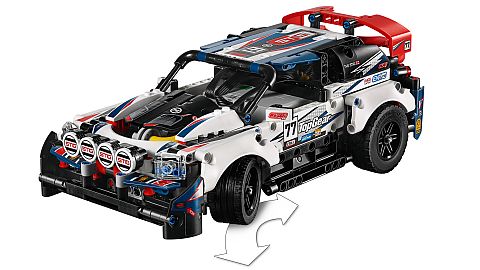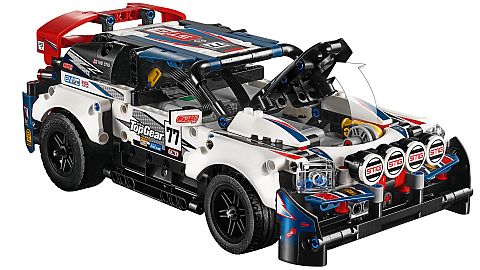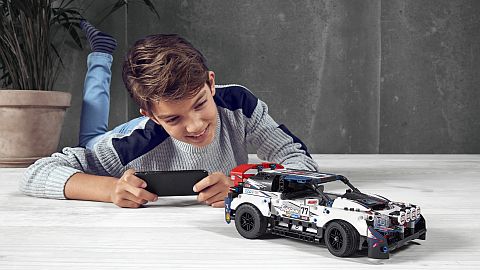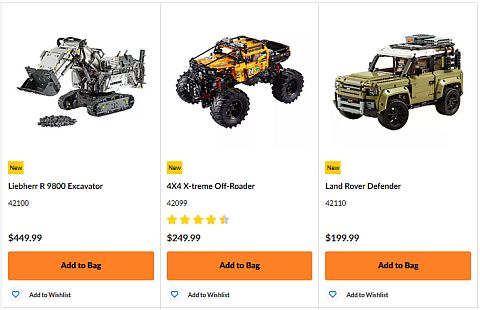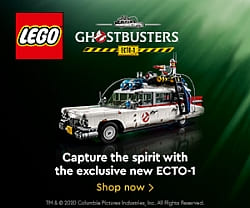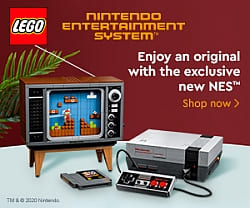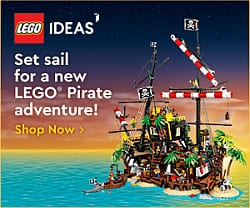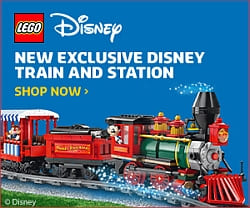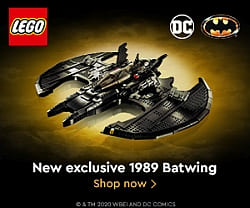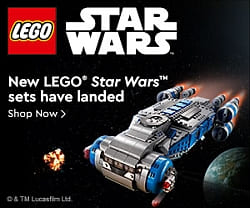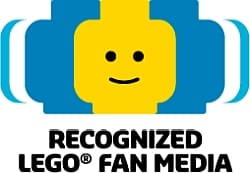Leading up to the holiday season, LEGO is offering two LEGO Disney sets this month with Double VIP Points, there is a large selection of sets on sale, and we also have some information on sets that will be retiring by the end of the year. So, let’s take a look.

The #41167 LEGO Disney Arendelle Castle Village is the first set offered with Double VIP Points this month. It’s related to the upcoming Disney Frozen II film scheduled for release on November 22nd. Anna and Elsa’s castle has three stories that can be removed and reassembled for play access inside. The furniture pieces are also designed to be easily moved and rearranged between the throne room, bedroom, and attic floors. On the outside, there is a baker’s stall, and a fishmonger’s stall with a small dock and rowing boat. As usual with Disney sets, there are lots of accessories and pretty colors as well. The three mini-dolls are Elsa, Anna, and Kristoff, and there is also a cat and two birds. The set can be combined with the other Disney Frozen II sets; the #41664 LEGO Disney Enchanted Treehouse, the #41165 LEGO Disney Anna’s Canoe Expedition, the #41166 LEGO Disney Elsa’s Wagon Adventure, the #41168 LEGO Disney Elsa’s Jewelry Box Creation, and the #41169 LEGO Disney Olaf brick-built figure. The castle measures over 11” (30cm) high, 11” (30cm) wide, and 4” (12cm) deep. 521 pieces. Price: $79.99 – BUY HERE
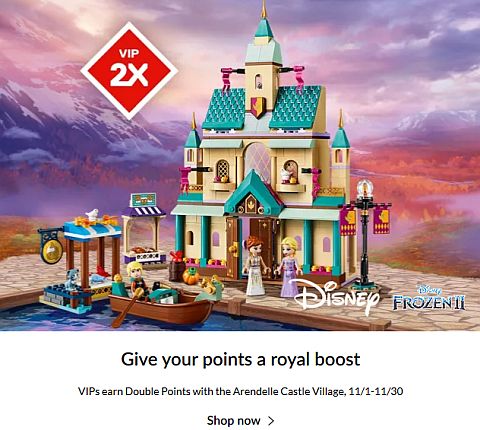
The #71044 LEGO Disney Train and Station is the second set offered with Double VIP Points this month. We talked about the set extensively (see links at the end of this post), but in summary, it features a motorized steam-style locomotive with tender, passenger car and parlor car, plus a full oval track for the train to run on (16 curved tracks and 4 straight tracks), and an iconic Disney Parks-style station building. The tender contains a #88009 LEGO Powered Up Hub, and a #88011 LEGO Powered Up Train Motor. The movement of the train and sound effects can be controlled from your smart device via the LEGO Powered Up app. The set also includes five exclusive minifigures with accessories; Mickey Mouse, Minnie Mouse, Chip, Dale, and Goofy. 2,925 pieces. Price: $329.99 – BUY HERE
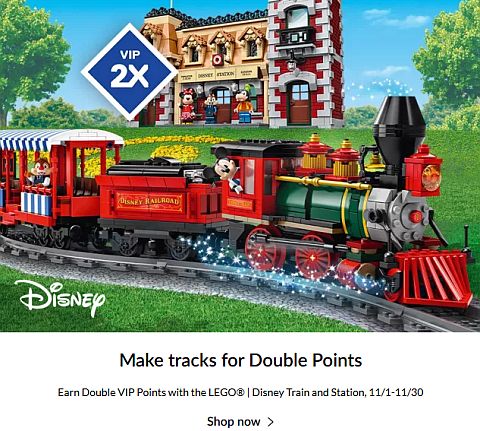
The sales section of the Online LEGO Shop features some interesting bundles. The newly released wooden LEGO minifigure can be purchased together with a couple of different storage and display solutions, and other useful items with a discount. The wooden minifigure is $119.99 by itself, so it makes sense to bundle it with something else for a discounted price. Visit the sales section of the Online LEGO Shop.
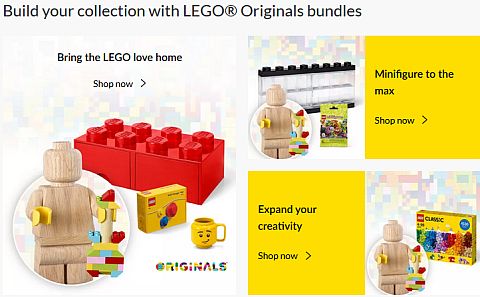

There is a large number of sets on sale, including LEGO Friends, LEGO Star Wars, the entire LEGO Movie 2 collection, and more. The discounts are around 25%-30%, which is pretty good even just for getting the parts. Please note that if you live near a LEGO store, there are even more sets on sale that aren’t available online. The bottom line is; check the sales section because you’ll likely find something that interests you. Here is the link to the sales section of the Online LEGO Shop.
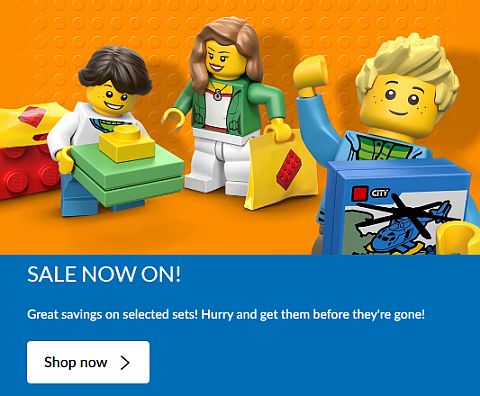
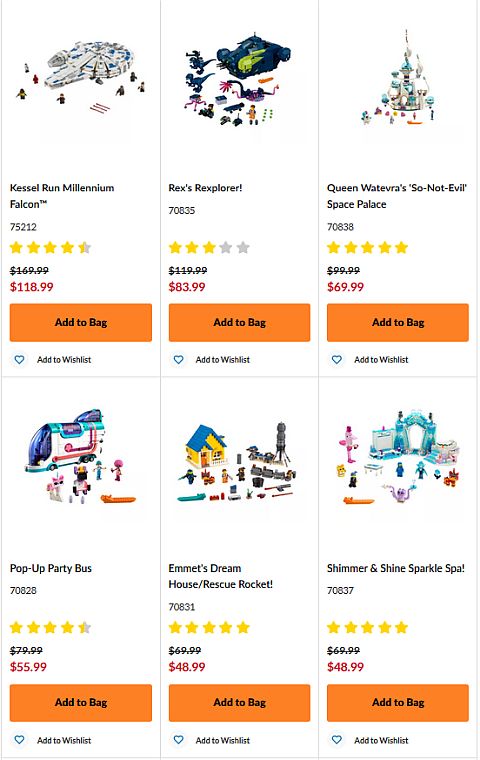
There is an extensive list of sets that are scheduled to be retired at the end of this year. This means that LEGO is not making any more of them. Some of them may linger around on store shelves for a bit longer, but others will disappear very quickly, especially with the holiday season upon us. So, if you want any of these sets, I would suggest getting them sooner than later. Please note that I bolded those that I know are of special interest to adult LEGO fans. Also note that I didn’t list The LEGO Movie 2 sets as they are all retiring.
#21030 LEGO Architecture United States Capitol Building
#21041 LEGO Architecture Great Wall of China
#80103 LEGO Chinese New Year Dragon Boat Race
#60141 LEGO City Police Station
#60173 LEGO City Mountain Arrest
#60182 LEGO City Pickup & Caravan
#60195 LEGO City Arctic Mobile Exploration Base
#60200 LEGO City Capital City
#60202 LEGO City People Pack: Outdoor Adventures
#60204 LEGO City Hospital
#60209 LEGO City Sky Police Diamond Heist
#60223 LEGO City Harvester Transport
#10243 LEGO Creator Parisian Restaurant
#10257 LEGO Creator Carousel
#31073 LEGO Creator Mythical Creatures
#31074 LEGO Creator Rocket Rally Car
#31079 LEGO Creator Sunshine Surfer Van
#32084 LEGO Creator Pirate Roller Coaster
#41153 LEGO Disney Ariel’s Royal Celebration Boat
#41154 LEGO Disney Cinderella’s Dream Castle
#41160 LEGO Disney Ariel’s Seaside Castle
#41162 LEGO Disney Ariel, Aurora and Tiana’s Royal Celebration
#41139 LEGO Friends Mia’s Camper Van
#41340 LEGO Friends Friendship House
#41345 LEGO Friends Heartlake City Pet Center
#41346 LEGO Friends Friendship Box
#41347 LEGO Friends Heartlake City Resort
#41363 LEGO Friends Mia’s Forest Adventure
#41365 LEGO Friends Emma’s Art Studio
#41368 LEGO Friends Andrea’s Talent Show
#75950 LEGO Harry Potter Aragog’s Lair
#75951 LEGO Harry Potter Grindelwald’s Escape
#75952 LEGO Harry Potter Newt’s Case of Magical Creatures
#21309 LEGO Ideas LEGO NASA Apollo Saturn V
#21311 LEGO Ideas Voltron
#21313 LEGO Ideas Ship in a Bottle
#21314 LEGO Ideas TRON: Legacy
#21315 LEGO Ideas Pop-Up Book
#21135 LEGO Minecraft The Crafting Box 2.0
#21142 LEGO Minecraft The Polar Igloo
#21147 LEGO Minecraft The Bedrock Adventures
#21148 LEGO Minecraft Steve BigFig with Parrot
#21149 LEGO Minecraft Alex BigFig with Chicken
#21150 LEGO Minecraft Skeleton BigFig with Magma Cube
#70620 LEGO Ninjago City
#70657 LEGO Ninjago City Docks
#70669 LEGO Ninjago Cole’s Earth Driller
#75970 LEGO Overwatch Tracer vs. Widowmaker
#75971 LEGO Overwatch Hanzo vs. Genji
#75972 LEGO Overwatch Dorado Showdown
#8293 LEGO Power Functions Motor Set
#75884 LEGO Speed Champions 1968 Ford Mustang Fastback
#75885 LEGO Speed Champions Ford Fiesta M-Sport WRC
#75886 LEGO Speed Champions Ferrari 488 GT3 Scuderia Corsa
#75888 LEGO Speed Champions Porsche 911 RSR and 911 Turbo 3.0
#75889 LEGO Speed Champions Ferrari Ultimate Garage
#75181 LEGO Star Wars Y-Wing Starfighter
#75210 LEGO Star Wars Moloch’s Landspeeder
#75220 LEGO Star Wars Sandcrawler
#75222 LEGO Star Wars Betrayal at Cloud City
#75225 LEGO Star Wars Elite Praetorian Guard Battle Pack
#75226 LEGO Star Wars Inferno Squad Battle Pack
#75228 LEGO Star Wars Escape Pod vs Dewback Microfighter
#75229 LEGO Star Wars Death Star Escape
#75230 LEGO Star Wars Porg
#75233 LEGO Star Wars Droid Gunship
#75247 LEGO Star Wars Rebel A-Wing Starfighter
#75259 LEGO Star Wars Snowspeeder – 20th Anniversary Edition
#75261 LEGO Star Wars Clone Scout Walker – 20th Anniversary Edition
#75262 LEGO Star Wars Imperial Dropship – 20th Anniversary Edition
#40343 LEGO Super Heroes Spider-Man and the Museum Break In
#76095 LEGO Super Heroes Aquaman: Black Manta Strike
#76104 LEGO Super Heroes The Hulkbuster Smash-Up
#76105 LEGO Super Heroes The Hulkbuster: Ultron Edition
#76112 LEGO Super Heroes App-Controlled Batmobile
#76116 LEGO Super Heroes Batman: Batsub and the Underwater Clash
#76117 LEGO Super Heroes Batman Mech vs. Poison Ivy Mech
#76134 LEGO Super Heroes Spider-Man: Doc Ock Diamond Heist
#42070 LEGO Technic 6×6 All Terrain Tow Truck
#42072 LEGO Technic WHACK!
#42073 LEGO Technic BASH!
#42074 LEGO Technic Racing Yacht
#42075 LEGO Technic First Responder
#42078 LEGO Technic Mack Anthem
#42079 LEGO Technic Heavy Duty Forklift
#42080 LEGO Technic Forest Machine
#42089 LEGO Technic Power Boat
#42094 LEGO Technic Tracked Loader
The holiday season is a great time to shop for LEGO sets both directly from LEGO and from LEGO retailers. We will talk more about where to shop for LEGO as we get closer to the end of the month, and in the meantime, these lists should keep you busy. Also, remember that the Holiday Gift Shop is now open at the Online LEGO Shop.

What do you think? What are you planning to get this holiday season? Are there any retiring sets and discounted sets that you’re planning to get? Feel free to share and discuss in the comment section below!
And you might also like to check out the following related posts:

